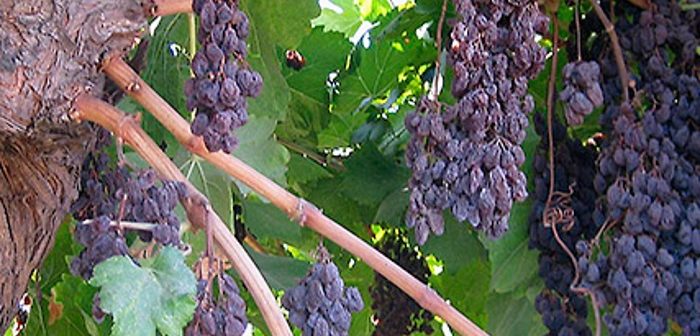A new raisin grape developed by Agricultural Research Service (ARS) scientists in California is proving to be very popular among producers because it costs less to harvest.
With many grapes, crews must go out about two weeks before the harvest and cut the canes, which are the long branches on the vines that actually produce the grapes. Once the canes are cut, the grapes begin to wilt so they can be shaken into trays later. Cane cutting costs about $130 per acre, which is roughly 36 percent of total harvest costs, according to Craig Ledbetter, an ARS plant geneticist at the San Joaquin Valley Agricultural Sciences Center.
The new “Sunpreme” raisin grape dries without cane cutting and could save millions of dollars in production costs. It grows well in the San Joaquin Valley, where roughly 200,000 acres of raisin grapes are produced each year. Sunpreme was bred and patented by now-retired ARS horticulturalist David Ramming. So far, five nurseries have licenses for the new green raisin grape, and some are already taking orders from grape producers, according to Ledbetter.
To give growers added guidance, Ledbetter and his colleagues compared the overall quality of Sunpreme grapes produced on vines that received three different irrigation levels and two pruning techniques. The three irrigation levels were replacing 100 percent of the water used by the vines and soil; reducing to 50 percent water at berry softening; and a “shock treatment” where the vine was initially irrigated, then denied water for two weeks, and finally given a 50-percent water treatment.
Results showed that the “shock treatment” saved the most water, but it could be tricky to implement. A better alternative is to irrigate at a 50-percent replacement level. The results also confirmed that Sunpreme vines only need to be “spur pruned,” which generally requires less skill than “cane pruning.” Grapes from spur-pruned vines were comparable in size, quality and number to grapes from cane-pruned vines, Ledbetter says.
The picture shows Sunpreme” raisin grapes drying naturally on the vine. Photo by Craig Ledbetter.




